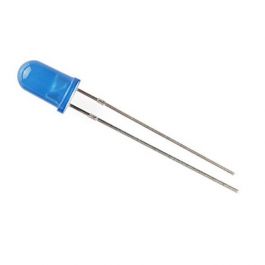joelorigo
Well-known member
I bought a few of these boards recently, what value resistor and trim pot should I use?



Oh, yeah… clear ones…I’d go 1k on the clr, and 20k for the trim. I use clear red leds with 10k as standard. That set up would go from blinding to dashboard dim.

For that one I get 300R as clr from the calculator.In this pedal I will be using this:

The lowest value trimmers I currently have are 5k and 10k.
Also, I don't mind a bright LED!
Good point. Actually I think I meant to buy the ones that don't have a trimmer / resistor. Is there a way to skip using the trimmer by jumping some of the trimmer pads?I don’t like to use these kind of solutions because trimpots are way more expensive than resistors, and it’s easy to try different resistor values with a led on a breadboard until you find a value that gives the amount of brightness you want. Set it and forget it. A trim is one more component you need to solder, to just adjust it once.
Yes, there surely is. I guess the CLR is in series to get a minimum value, so you probably need to bridge the leg connected to the CLR and the one connected to the led (check with a multimeter in continuity).Good point. Actually I think I meant to buy the ones that don't have a trimmer / resistor. Is there a way to skip using the trimmer by jumping some of the trimmer pads?
I am building this now, jumped the trimmer pads as indicated above. I currently have 240R and 470R for the resistor. What would be the effect of a lower and higher value? I assume one will be a brighter LED, the other less?For that one I get 300R as clr from the calculator.
Basically (9V-3.2V)/0.02A=290R (300R is the closest)
9V is the circuit voltage, 3.2V is the Fv of the led (indicated in the page), and 0.02A (20mA) is the led current (also indicated in the page).
I don’t like to use these kind of solutions because trimpots are way more expensive than resistors, and it’s easy to try different resistor values with a led on a breadboard until you find a value that gives the amount of brightness you want. Set it and forget it. A trim is one more component you need to solder, to just adjust it once.
290R is peak brightness, so 240R will stress the led, and make it last less than it should. 470R will make it dimmer, but if the led is bright, it won’t matter much.I am building this now, jumped the trimmer pads as indicated above. I currently have 240R and 470R for the resistor. What would be the effect of a lower and higher value? I assume one will be a brighter LED, the other less?
Thanks for this info. Most of the time I will be in the garage by myself.290R is peak brightness, so 240R will stress the led, and make it last less than it should. 470R will make it dimmer, but if the led is bright, it won’t matter much.
Where will you be using this pedal? If you play outside on a sunny day, you may want to use something near peak brightness, to be able to see the led. But if you’re using the pedal indoors at home, or in dark places, and the led is bright, you may want to use a higher resistor, to tame the led a bit, since it may dazzle you in those settings. Maybe use something in the 1.5k-2k range.
To test the brightness you can use a 9v battery, twist the resistor to one leg and connect the resistor and the other leg to the battery. Or use a breadboard.
